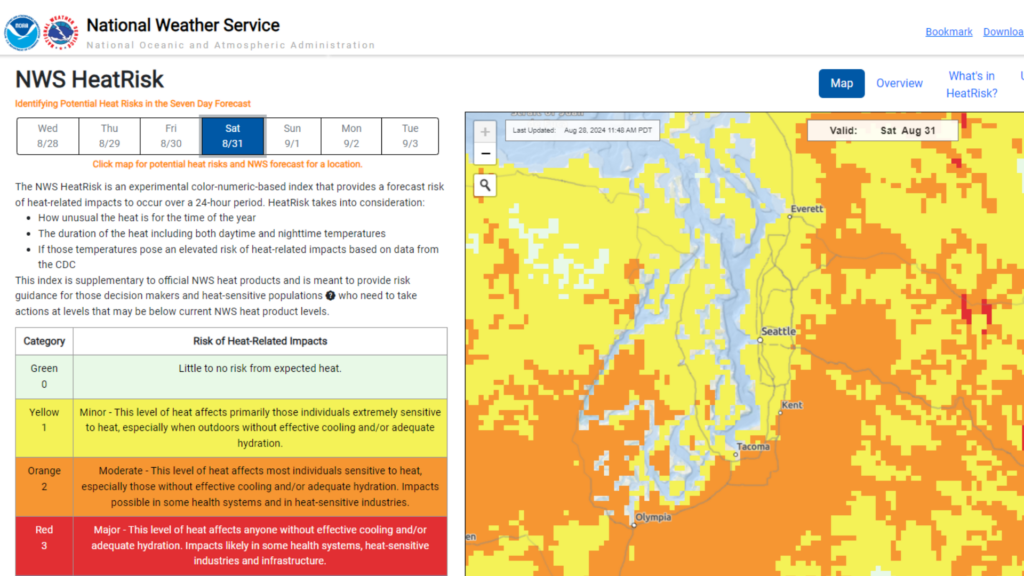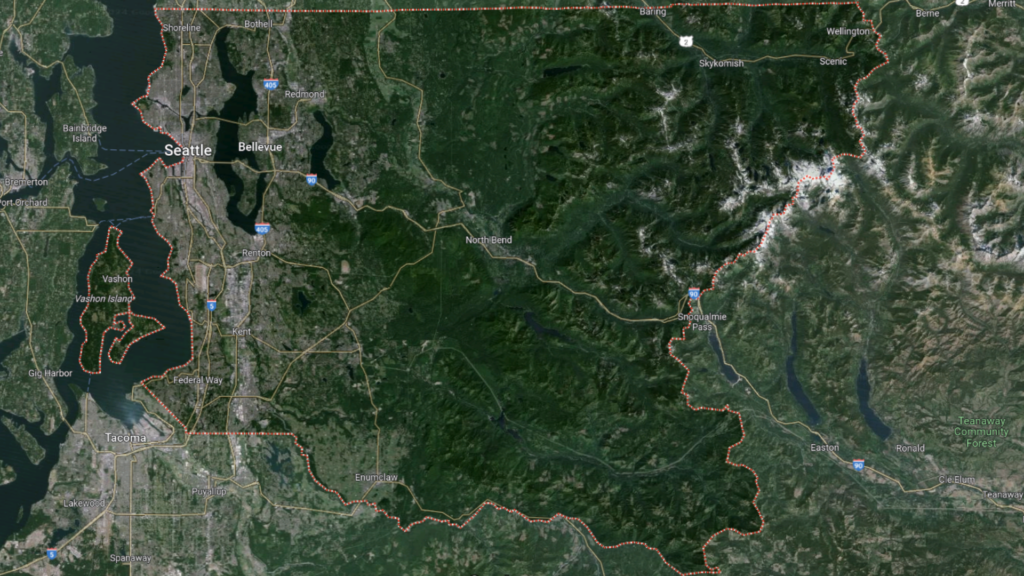As the agency tasked with coordinating the homelessness services response to severe weather events in King County, we know that the decision to activate severe weather protocols can be challenging.
King County is incredibly geographically diverse. With nearly 8,000 feet difference in elevations between the highest and lowest points in the county, a saltwater sea to the west, two large lakes—and around 370 other smaller lakes—and a mountain range to the east, weather across the county can vary greatly at any given moment.
In addition to our diverse geography causing diverse weather patterns within our region, how an area has been developed can create an impact, too. In areas that have a lot of development, but minimal tree canopies and/or proximity to water, we see higher levels of heat on hot days—this effect is known as a “heat island.”
What often results from a combination of our natural geography and our built environment is that weather hazards are amplified in certain regions.
Take, for example, the NWS HeatRisk index for the coming weekend—East and parts of South King County are entering the Orange tier—where we would typically activate services, but West and the majority of North King County are anticipated to be in the Yellow tier.

This also sometimes happens in the winter, when precipitation levels are higher, or temperatures are lower, in one subregion of King County, than others—or the majority of the county.
This creates a complicated activation need, especially when we add the consideration of available resources such as existing space, on-hand resources, and funding.
The question remains: What does the KCRHA do when these complicated situations arise?
The answer, as you may have guessed, is complicated and nuanced. It depends on the resources available in the subregion that is experiencing severe weather.
If it’s a subregion where we have an existing active service provider contract in place, we can activate that service provider’s space/resources, as well as provide additional resources to that service provider. A good example of this is our contract with Urban League in North King County, which is funded through the North King County Interlocal Agreement (ILA). (Though, in this situation, we would not be able to activate standby shelters.)
In subregions where we do not have an active provider contract, we act more in an advisory role—recommending actions and providing information. We may also be able to respond to requests for supplies like water, electrolyte drinks, cooling towels, and sunscreen from sanctioned encampments in subregions without contracted service providers, if the supplies are available and transportation can be arranged.
The funding we have available is often restricted by purpose (e.g., severe weather response), and by region (e.g., funds from the City of Seattle must be spent in the City of Seattle, and funds provided through the North King County ILA must be spent within the five municipalities that partnered through the North King County ILA.)
Ultimately, we will do what is within our power and available resources to ensure that our unsheltered community members who need support and safety during severe weather events receive it.
We are fervently working toward a day where we have a truly regional severe weather response, with all of the communities in King County working together to provide seasonally appropriate shelter.
Housing solves homelessness. But, until everyone in King County is housed, and as we face ever-increasing impacts of climate change, we must provide life-saving resources in the regions where those resources are needed most during severe weather events.



